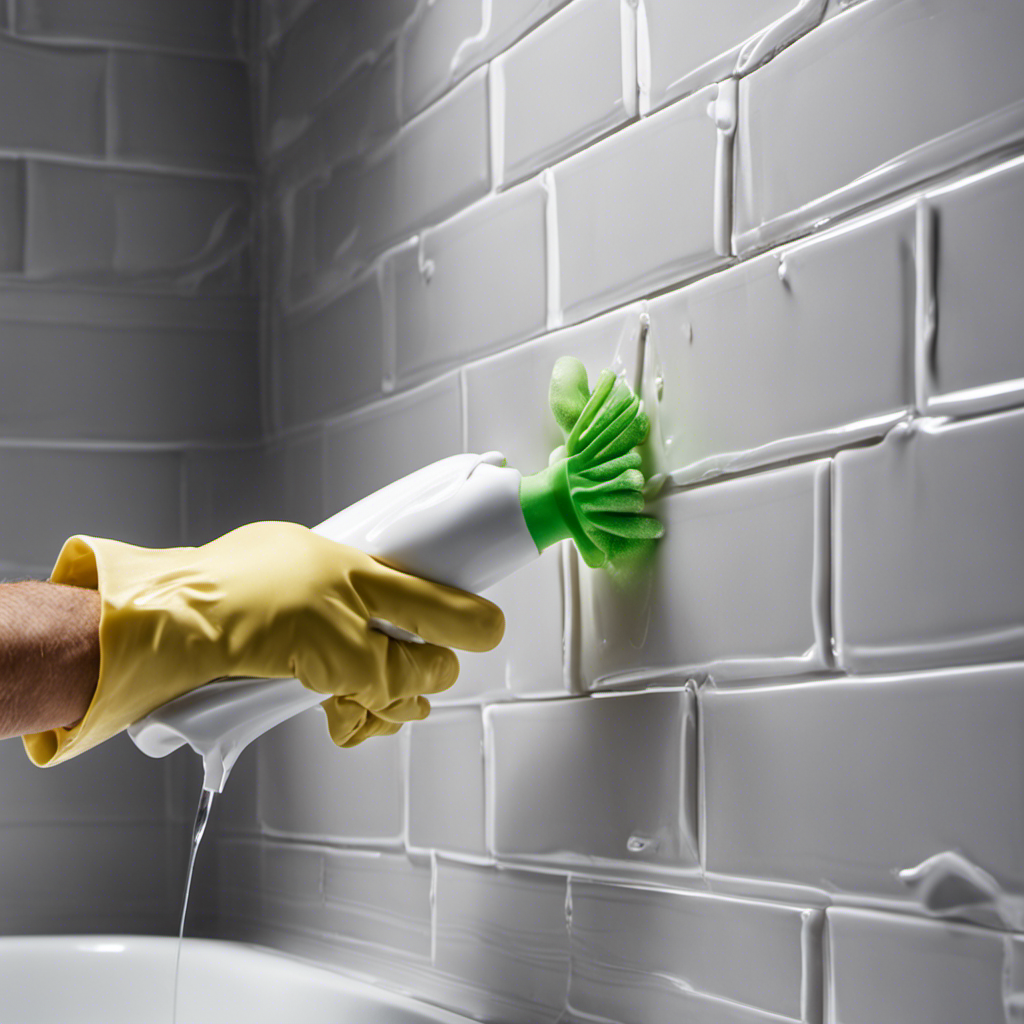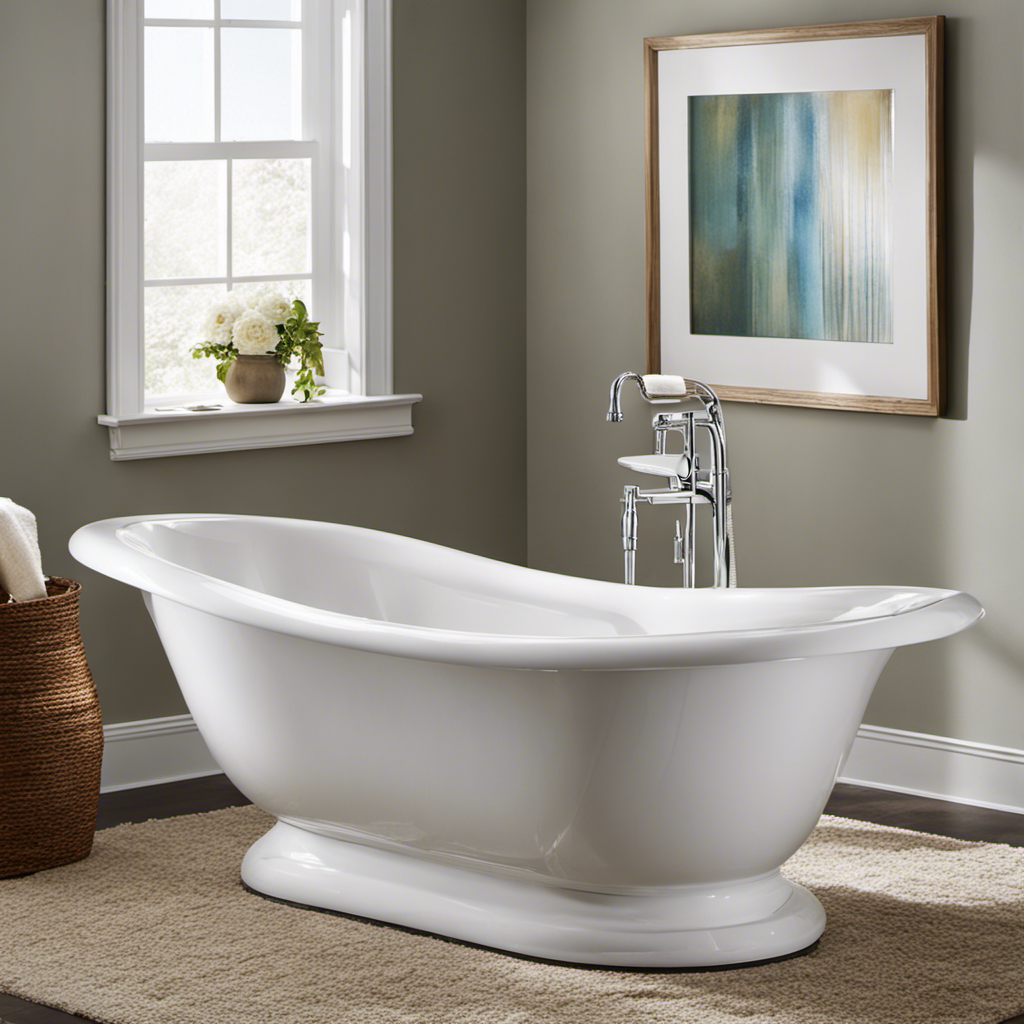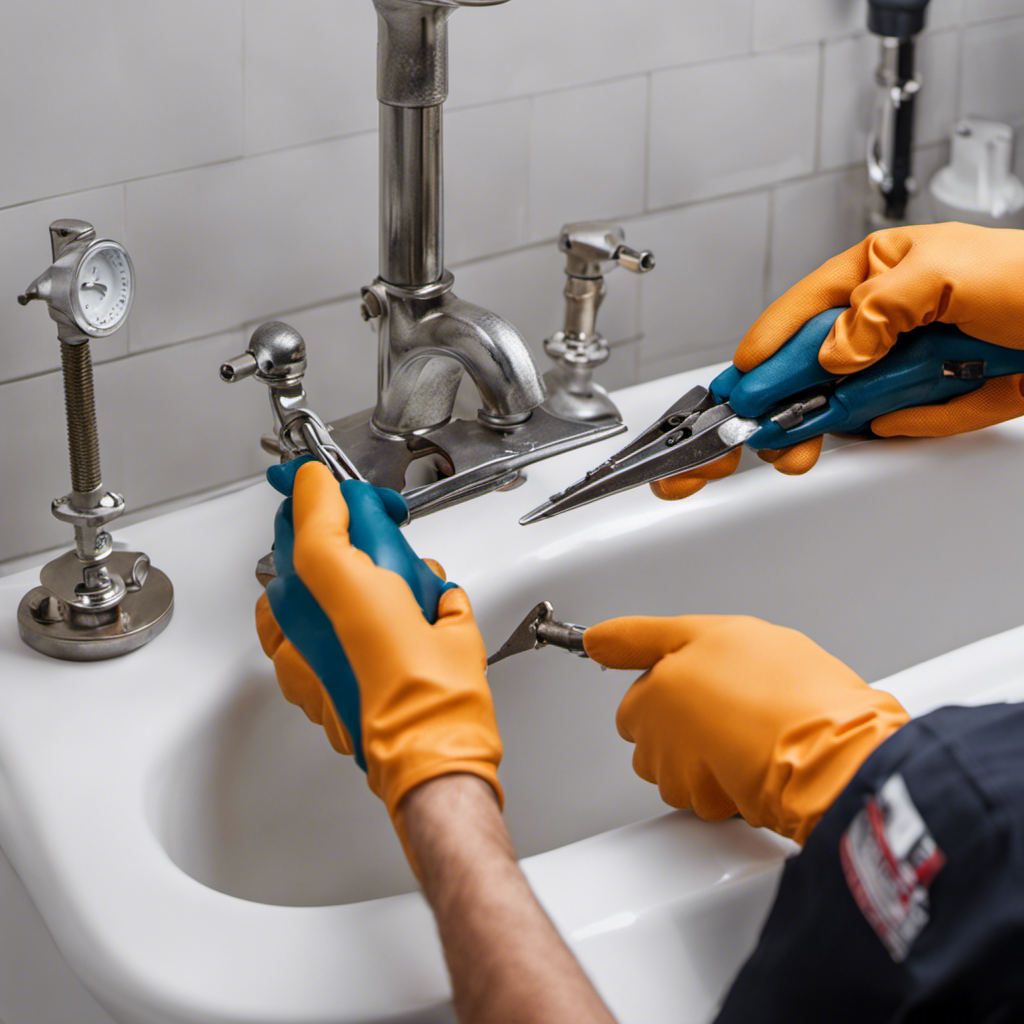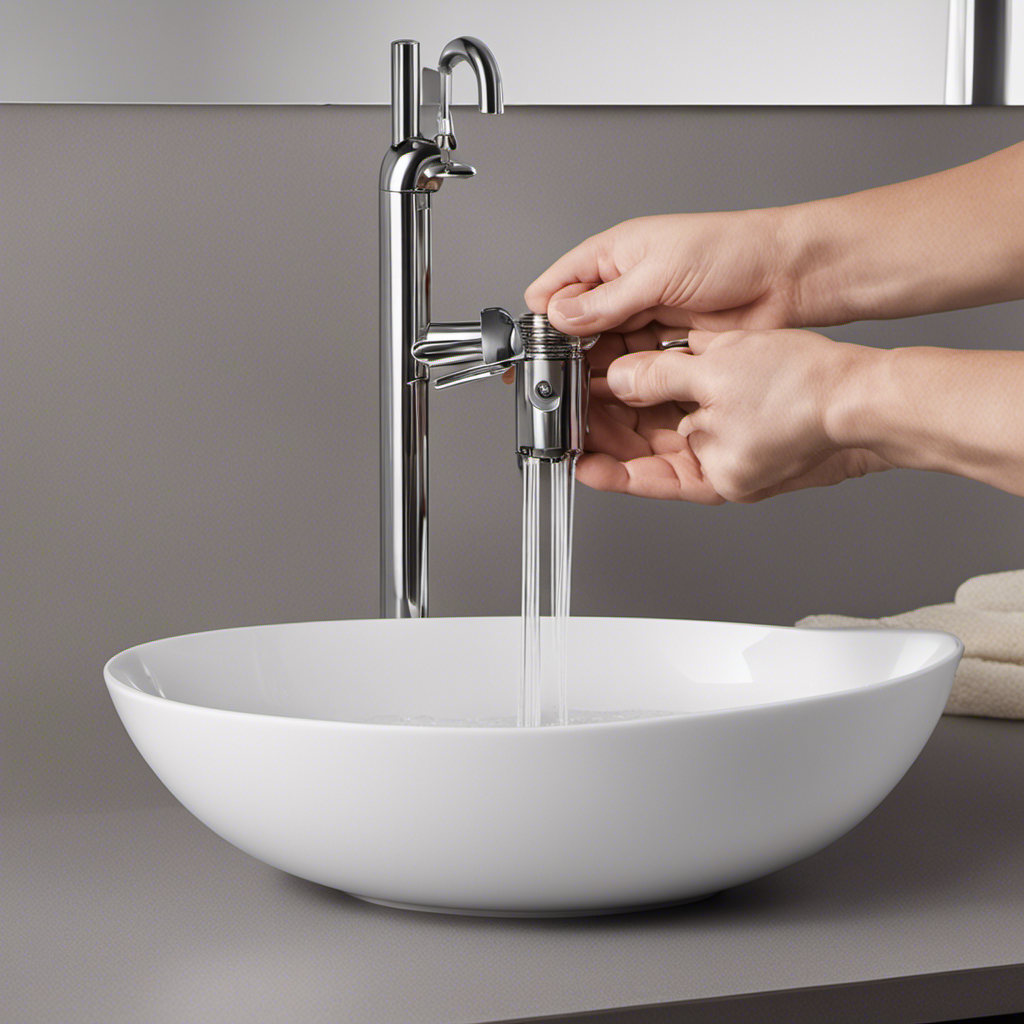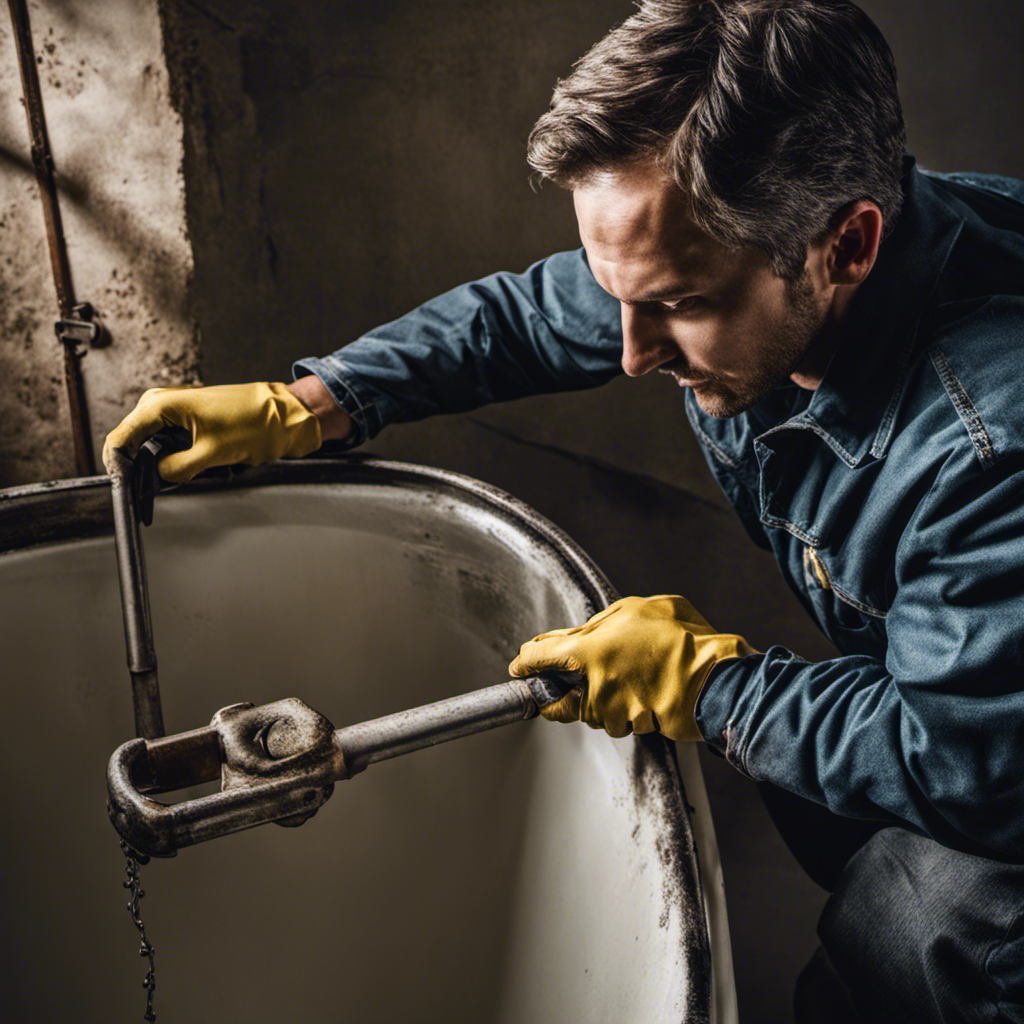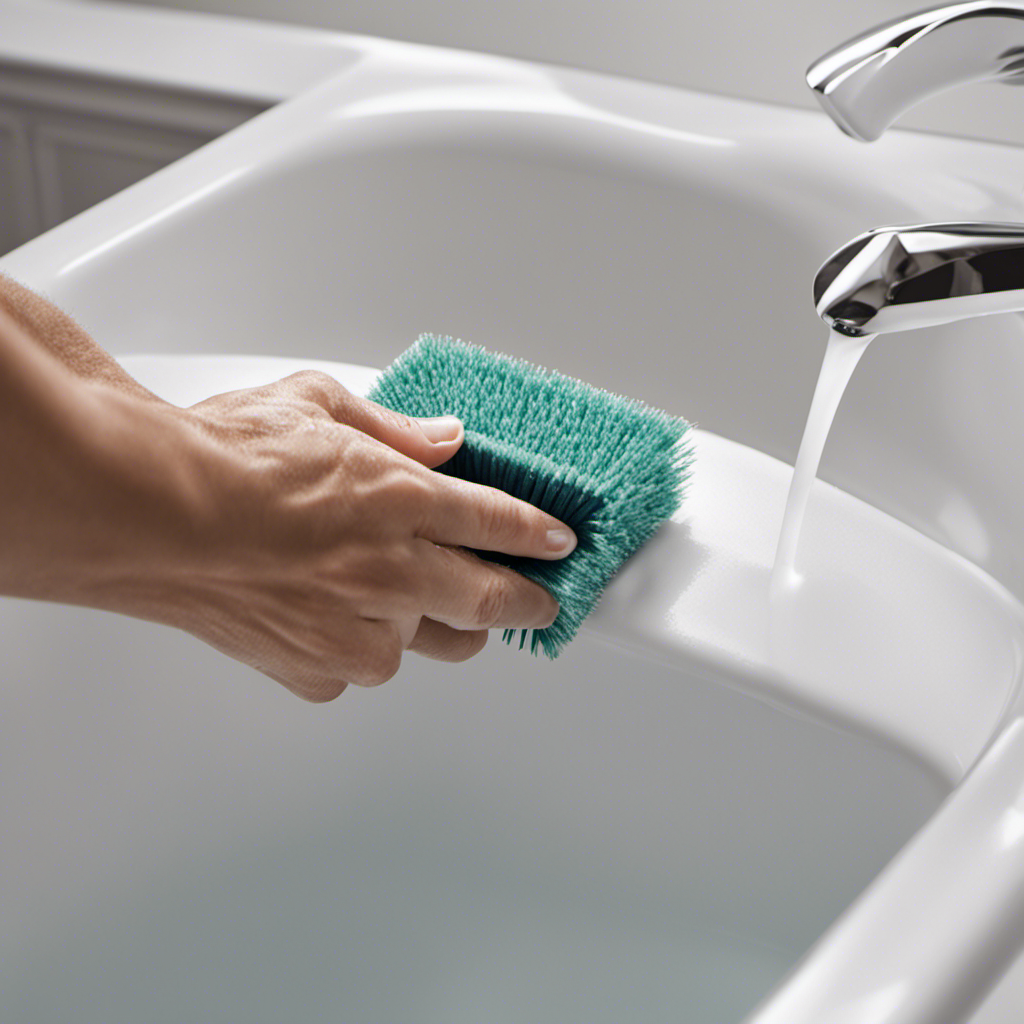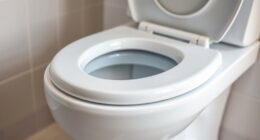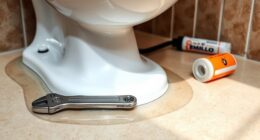I’ve tried every trick in the book, but that stubborn caulk in my bathtub just won’t budge.
But fear not, because I’ve finally discovered the ultimate solution to this sticky problem.
In this article, I’ll share with you my tried-and-true method for removing caulk from your bathtub.
With just a few simple tools and a little bit of patience, you’ll have a caulk-free bathtub in no time.
Say goodbye to that unsightly caulk and hello to a fresh, clean bathroom!
Key Takeaways
- Use the right tools and materials, such as a utility knife, caulk remover tool, scraper, gloves, and goggles, for safe and effective caulk removal.
- Prepare the bathtub by thoroughly cleaning it, scraping off loose caulk, wiping down with rubbing alcohol, and applying caulk softener or remover gel.
- Choose the appropriate technique for removing caulk based on its type and condition, such as using chemical caulk removers, scraping with a sharp-edged scraper, or cutting through with a utility knife.
- Clean up after caulk removal using vinegar, isopropyl alcohol, citrus-based cleaner, hydrogen peroxide, or a mixture of baking soda and water, and apply new caulk with precision and care for a neat finish.
Tools Needed for Removing Caulk
You’ll need a utility knife, caulk remover tool, and a scraper to remove the caulk from your bathtub. When it comes to caulk removal techniques, it’s important to have the right tools for the job.
A utility knife is essential for cutting through the caulk and creating a clean edge. The caulk remover tool helps to loosen and remove the caulk from the surface. Lastly, a scraper is used to scrape away any remaining caulk residue.
However, before you start removing the caulk, there are some caulk removal safety precautions to keep in mind. Always wear protective gloves and goggles to protect your skin and eyes from any chemicals or debris. Make sure the bathroom is well-ventilated to prevent inhaling any harmful fumes. Additionally, take your time and work carefully to avoid any accidents or injuries.
Preparing the Bathtub for Caulk Removal
Before starting, it’s important to gather all the necessary tools for preparing the bathtub for caulk removal. Here are some tips to help you clean and prepare your bathtub for this process:
-
Start by thoroughly cleaning the bathtub with a mild cleaner to remove any dirt or grime.
-
Use a razor blade or caulk removal tool to carefully scrape off any loose or damaged caulk from the edges of the bathtub.
-
Wipe down the area with rubbing alcohol to remove any residue or oils that may prevent the new caulk from adhering properly.
-
Finally, use a caulk softener or caulk remover gel to soften and dissolve the remaining caulk, making it easier to remove.
Softening the Caulk for Easy Removal
When it comes to softening caulk for easy removal, there are a few effective methods I can recommend.
One option is using a heat gun, which can help loosen the caulk and make it easier to scrape away.
Another method involves using a mixture of vinegar and soap, which can help break down the caulk and make it more malleable.
Lastly, combining these two methods can provide even better results for removing stubborn caulk from surfaces.
Heat Gun Method
To start removing the caulk from your bathtub using a heat gun, make sure you have protective gloves and safety goggles on. Heating caulk with a heat gun can make it softer and easier to remove. Here are some alternative methods you can try:
- Apply heat directly to the caulk using a heat gun on a low setting.
- Move the heat gun back and forth to evenly distribute the heat.
- Use a putty knife or caulk removal tool to gently scrape away the softened caulk.
- Be careful not to damage the surface of the bathtub while scraping.
Vinegar and Soap
If you want to try a more natural approach, you can use vinegar and soap to dissolve the caulk. Vinegar is a great alternative to harsh chemicals and can effectively break down the caulk, making it easier to remove. Simply mix equal parts of vinegar and warm water in a spray bottle and spray it onto the caulk. Let it sit for about 30 minutes to an hour to allow the vinegar to penetrate the caulk. Then, use a putty knife or a caulk removal tool to gently scrape away the softened caulk.
If the caulk is stubborn, you can also add a few drops of liquid dish soap to the vinegar solution for extra effectiveness. This vinegar and soap method is one of the many caulk removal hacks that can make the process easier and more eco-friendly.
Now that you know about the vinegar and soap method, let’s move on to other techniques for removing caulk.
Techniques for Removing Caulk
First, gather the necessary tools for removing caulk from your bathtub. You will need the following:
- Chemical caulk removers: These products are specifically designed to dissolve and soften caulk, making it easier to remove.
- Scraper: A scraper with a sharp edge is essential for scraping away the old caulk from the bathtub surface.
- Utility knife: A utility knife can be used to cut through stubborn or hard-to-reach caulk.
- Caulk removal tool: This tool is designed to help you remove caulk without damaging the surrounding surfaces.
When it comes to removing caulk, there are two main techniques: scraping and cutting. Scraping involves using a scraper or caulk removal tool to physically scrape away the caulk from the surface. Cutting, on the other hand, involves using a utility knife to cut through the caulk and then peeling it away.
Both techniques can be effective, but the choice depends on the type and condition of the caulk.
Cleaning Up After Caulk Removal
Now that you’ve successfully removed the caulk from your bathtub, it’s time to clean up the mess. Cleaning up after caulk removal is an important step to ensure a smooth and tidy finish. There are various cleaning products and caulk removal alternatives that can help you effectively clean the area.
To make it easier for you, here is a table that highlights some popular cleaning products and caulk removal alternatives:
| Cleaning Product/Alternative | Description | Benefits |
|---|---|---|
| Vinegar | Natural and non-toxic | Removes residue and disinfects the area |
| Isopropyl Alcohol | Dissolves adhesive residue | Evaporates quickly, leaving no residue |
| Citrus-based Cleaner | Pleasant scent | Effective in removing tough stains |
| Hydrogen Peroxide | Oxidizing agent | Removes mold and mildew |
| Baking Soda and Water | Gentle abrasive | Helps scrub away stubborn caulk residue |
Using these cleaning products and caulk removal alternatives will ensure a clean and tidy finish after removing caulk from your bathtub.
Final Steps for a Caulk-Free Bathtub
Once you’ve finished cleaning up the area, it’s essential to let it dry completely before applying any new caulk. This ensures that the caulk adheres properly and prevents any moisture from getting trapped underneath.
To maintain your bathtub and prevent caulk residue, follow these steps:
- Ensure the surface is clean and free of any debris or old caulk.
- Use a high-quality caulk specifically designed for bathroom use.
- Apply the caulk in a smooth, continuous bead along the joint, using a caulk gun for precision.
- Use a caulk smoothing tool or your finger to smooth out the caulk and create a neat finish.
Frequently Asked Questions
Can I Use a Hairdryer to Soften the Caulk Instead of a Heat Gun?
I don’t recommend using a hairdryer to soften caulk as an alternative method to remove it. It may not generate enough heat to effectively soften the caulk. It’s best to use a caulk removal tool for better results.
Is It Necessary to Remove All the Old Caulk Before Applying New Caulk?
It’s important to remove old caulk before applying new caulk to ensure proper adhesion. While there are alternative caulk removal methods, thorough preparation of the surface is crucial for long-lasting results.
Can I Use a Sharp Knife to Remove the Caulk Instead of a Caulk Removal Tool?
I can use a sharp knife as an alternative to a caulk removal tool. There are different caulk removal techniques, and using a sharp knife is one option.
How Long Does It Typically Take for Caulk Softening Solutions to Work?
Typically, caulk softening solutions take around 2-4 hours to work. They’re helpful when removing caulk from a bathtub. Using caulk removal techniques and following tips for removing caulk residue can make the process easier.
What Is the Best Method to Clean up Excess Caulk Residue From the Bathtub After Removal?
To clean up excess caulk residue from the bathtub after removal, I recommend using a caulk remover tool or a plastic scraper. Be careful not to damage the bathtub while removing the caulk.
Conclusion
In conclusion, removing caulk from a bathtub may seem daunting, but it can be done effectively with the right tools and techniques. By following the steps outlined in this article, you can achieve a caulk-free bathtub that looks clean and fresh.
Remember the old saying, ‘A little bit of elbow grease goes a long way.’ With patience and determination, you can successfully remove caulk and enjoy a beautifully restored bathtub.
Don’t be afraid to tackle this DIY project and give your bathroom a fresh new look.
